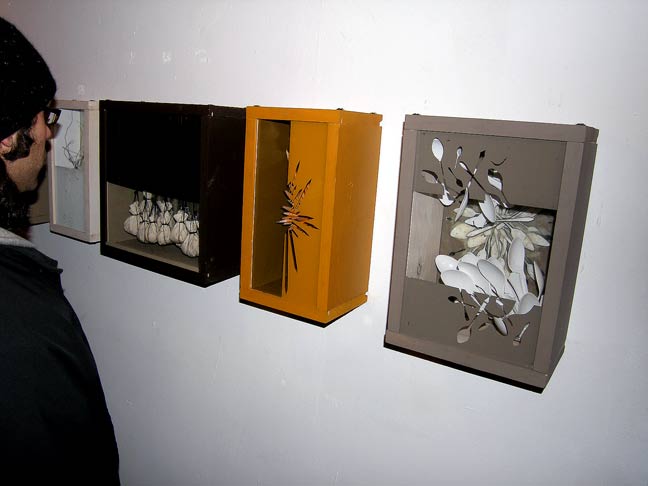Famous works of abstract art achieve popularity by using shapes that resonate with the neural mechanisms in the brain linked to visual information, a psychologist at the University of Liverpool has discovered.

Piet Mondrian, Composition with Yellow, Blue, and Red, 1921
University of Liverpool, November 22, 2008 — Humans make aesthetic judgements about shapes and forms quickly and easily, preferring certain shapes to others, even in the absence of any narrative. Dr Richard Latto, from the University’s Psychology department, has discovered that these shapes resonate with the processing properties of the human visual system, which is responsible for analyzing what we have seen.
Dr Latto said: “Humans inherit a basic visual system through genetics. That system provides very selective information about the world around us. It has evolved to provide only the information that we need to survive – for example, we cannot see most electromagnetic radiation or follow the leg movement of a galloping horse.
“Of course our visual systems can be influenced by social factors, like fashion and the number of abstract images that we expose ourselves to, but evolution had given us some genetically determined responses to certain shapes and forms. In popular abstract works such as Matisse’s The Snail (1953), Mondrian’s Composition with Red, Blue and Yellow (1921), and Malevich’s Supremus No. 50 (1915), the artists start with a blank canvas and arrange shapes and colours in a way that is aesthetically pleasing, using their own brain to monitor the effect.
“We like to look at the human body or parts of the body like the face and hands, stylized representations like stick figures and organic forms of the kind incorporated into the work of Salvador Dali and Francis Bacon. Certain landscapes and horizontal and vertical lines are also popular because they resonate with our visual systems, which have been tuned by evolution and experience to respond particularly to these biologically and socially important stimuli.
“We know that neurons in the brain need to be kept active to flourish and develop, so it is important for the visual system to be stimulated and sometimes pushed to the limit to function effectively. As with other adaptive behaviors, we have evolved a mechanism for encouraging this by rewarding ourselves with good feelings. Perhaps we enjoy looking at faces, landscapes and Mondrian’s work because it is good for us and good for our brains.”
Dr Latto added: “Artists were experimenting with abstract shapes long before scientists began analyzing our nature of perception. Through observation or trial-and-error, artists have been identifying these aesthetic primitives – critical shapes and arrangements – and have indirectly defined the nature of our visual processes. In purely abstract painting, as with much music, form is all we have. Popular works have shown that essentially we like looking at what we are good at seeing.”
 Kazimir Malevich, Supremus No. 50, 1915
Kazimir Malevich, Supremus No. 50, 1915
 Ben and I spent a good chunk of our morning SWEATING//SLEEPING//ITCHING//STRUGGLING.
When we couldn't take it anymore, the unanimous decision was to take showers and plan our first day in the gorgeous outer banks.........Located in a shack, separated from the bathrooms were the showers; they were beautiful little holes in the wall that had pull strings to run the cold water on. The shower walls had been painted 3 times through the course of time: a creamsicle orange, an off-white, and a sky blue. All showing through in a rustic, speckled, abstract way.
Ben and I spent a good chunk of our morning SWEATING//SLEEPING//ITCHING//STRUGGLING.
When we couldn't take it anymore, the unanimous decision was to take showers and plan our first day in the gorgeous outer banks.........Located in a shack, separated from the bathrooms were the showers; they were beautiful little holes in the wall that had pull strings to run the cold water on. The shower walls had been painted 3 times through the course of time: a creamsicle orange, an off-white, and a sky blue. All showing through in a rustic, speckled, abstract way.
 We later set off to grab a little breakie and fell into a small food shack called the HATTERASMAN. >>50 cent bottomless cup of coffee>> bacon, egg & cheese on a biscuit>> the start of a wonderful day!
We later set off to grab a little breakie and fell into a small food shack called the HATTERASMAN. >>50 cent bottomless cup of coffee>> bacon, egg & cheese on a biscuit>> the start of a wonderful day! After breakie, we spent the rest of our day soaking up the sun and playing with the ocean.
After breakie, we spent the rest of our day soaking up the sun and playing with the ocean.








 Kazimir Malevich, Supremus No. 50, 1915
Kazimir Malevich, Supremus No. 50, 1915 



